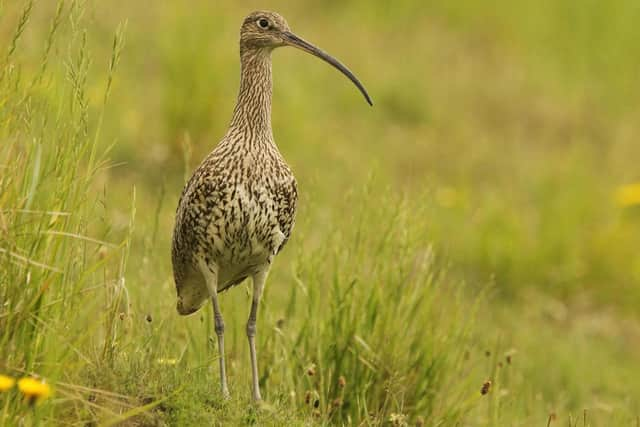Conservation efforts of gamekeepers on grouse moors in the Yorkshire Dales are giving a new lease of life to the curlew - Adrian Blackmore
It is the income from shooting that helps pay for the cost of their management, and it is this management that has played such an important role in creating and maintaining our upland landscape, preserving and improving heather habitat and peatland, sustaining some of our rarest plants and wildlife, and promoting biodiversity.
Taking the three pillars of sustainability identified by the International Union for the Conservation of Nature, a new report published this week highlights how grouse shooting is part of a complex mix of activities that result in more positive outcomes for people and nature than any of the various alternative uses of moorland that have been put forward by others.
Advertisement
Hide AdAdvertisement
Hide AdIt encompasses the full meaning of ‘sustainability’, with integrated moorland management being a complex issue with numerous strands. Take away one strand, such as driven grouse shooting, and the environmental, social and economic implications would be enormous.


The majority of upland areas where driven grouse shooting takes place have developed a sustainable model of operation. They are a biodiversity success story, with species of threatened ground-nesting birds such as curlew, lapwing, golden plover, and red grouse breeding successfully, and in greater numbers, than elsewhere in the uplands.
It is no coincidence that curlew are 3.5 times more likely to successfully raise chicks on grouse moors thanks to their management and this is of particular importance for the species.
The United Kingdom has an important breeding and overwintering population of curlew, with around a quarter of the world’s pairs breeding at sites in spring and summer, and a fifth of the world’s population overwintering in our coastal areas.
Advertisement
Hide AdAdvertisement
Hide AdHowever, the curlew’s distinctive and evocative call is one that increasingly fewer people, especially those in lowland Britain, can enjoy, with our population of breeding curlew declining by 46 per cent in the last 25 years.
Although a species that could once be found breeding across Britain, its range has become increasingly diminished, with declines in our lowlands being especially dramatic.
With only around 250-350 pairs nesting south of an imaginary line drawn through Birmingham, it has become a bird of our uplands, and as a species, it is widely regarded as being our bird of highest conservation concern.
Research into the reasons for their decline has determined that the main contributory factor is that of breeding success; not poor adult survival. Curlews return to the same areas to nest each year, and the loss, degradation and fragmentation of suitable habitat has taken its toll.
Advertisement
Hide AdAdvertisement
Hide AdNesting on the ground, curlews are particularly vulnerable, not just to human disturbance and agricultural nest destruction, but also to high levels of predation. A review of scientific studies across Europe found that 70 per cent of nests between 1996 and 2006 failed to hatch a single chick, and of those that did hatch only half survived from hatching to fledging.
Such poor breeding success is too low to maintain the population. The lawful control of predators such as foxes, carrion crows, stoats and weasels, is therefore vital to ensure the survival of curlew, and stem further decline.
Whilst recognising the need to undertake predator control to protect breeding waders, a recent study undertaken by the RSPB concluded that the means they used in doing so was unlikely to be effective for curlew.
That is because their management of predators only involved the limited shooting of foxes, and the use of Larsen traps to control crows.
Advertisement
Hide AdAdvertisement
Hide AdIn contrast, a recently published paper by the Game & Wildlife Conservation Trust showed how the use of all legal methods for the control of foxes, mustelids, and corvids helped minimise predation pressure, and contributed enormously to curlew conservation. This is what grouse moor managers do, and as a result, the breeding success of curlew is four times greater on moorland that is managed for grouse than that which is not.
It is due to the conservation efforts of gamekeepers on grouse moors in the Yorkshire Dales that curlew are now being reintroduced to the South of England. Last year Natural England issued a licence for the removal of 40 eggs from highly vulnerable nests that would otherwise have been in danger of being predated, disturbed by dog walkers, or destroyed by agricultural machinery. The project was such a success that Natural England this year agreed to the removal of a further 120 eggs from managed grouse moors in the Yorkshire Dales.
Adrian Blackmore is director of shooting at the Countryside Alliance.